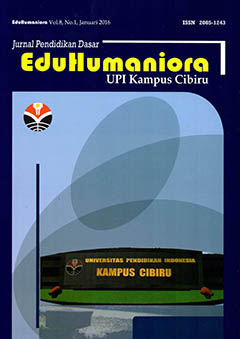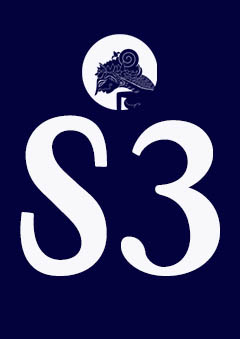The Application of Project Base Constructive Paly to Encourage Student's Ability in Creative Expression and Communication
Abstract
Full Text:
PDF (Bahasa Indonesia)References
Barlow, C., M., (2000) Guilford’s Structure of the Intellect.[online] available at; http://guilford.Pdf [23 March 2013]
Becker, L., A., (2000) Effect Size (ES) .[online] available at; http://www2.jura.unihamburg.de/instkrim/kriminologie/Mitarbeiter/Enzmann/Lehre/StatIIKrim/Effe ctSizeBecker.pdf
Chen, J. C. (1997), An Examination of Theories of Aesthetic Development with Implication for Future Research. Taiwan: Journal of Tauwan National Normal University. [online] available at : http://140.122.100.145/ntnuj/j42/hs42-2.pdf [1 Februari 2011]
Day, B. (1983), Early Childhood Education; Creative learning activities. New York: Mc Milan Publishing Co.
Docket & Fleer (1999) Play and Pedagogy in Early Childhood. Sidney: Harcourt Australia Pty. Limited.
Efland, A. D. (2002), Art and Cognition; Integrating The Visual Arts in The Curriculum,[online] available at: http://study-art.free-books.biz/Art-andCognition-Integrating-the-Visual-Arts-in-the-Curriculum-PDF-383.html [17Oktober 2012]
Herawati, I, S, &Iriaji (1999) Pendidikan Seni Rupa. Jakarta: DEPDIKBUD
Krathwohl, D., R., (2002) A Revision of Bloom’s Taxonomy: An Overview. [online] available at: http://Krathwohl.pdf [21 July 2014]
Kaufman, J., C., et al., (2008) Essentials of Creativity Assessment. New Jersey, John Wiley & Sons, Inc.
Li, R., (2010) Visualizing Creativity: An analysis of the relationship between creativity and visualization through an overview of theories of creativity visualization technologies. [online] available at; http://LiR.pdf [1 Mei 2015]
McMillan, J., H., & Schumacher, S., (2001) Research in Education; a Conceptual Introduction (cet.5). New York, Addison Wesley Longman, Inc.
Munandar, U. (2009), Pengembangan Kreativitas Anak Berbakat. Jakarta: Rineka Cipta.
Nutting, C., M., (2007) Concrete Insight; Art, the Unconscious, and Transformative Spontaneity. [online] available at; http://nutting.pdf [12 November 2013]
Rahmat, J. (2008) Psikologi Komunikasi. Bandung: PT. Remaja Rosda Karya.
Sujiono, Y. N. (2009), Konsep Dasar Pendidikan Anak Usia Dini. Jakarta: Indeks.
Thistlewood, D., (2002), Herbert Read, Paris, UNESCO: International Bureau of Education. [online] available at; http://reade.pdf [12 November 2013]
Treffinger, D., J., et al. (2003) Creativity Styles and Personal Type. [online] available at; http://Creativity Styles.pdf [1 Mei 2015]
Zaman, A., N., (2003) Anthony Giddens; Masyarakat Post-Traditional, Living in Post-Traditional Society. Yogyakarta. IRCiSoD
DOI: https://doi.org/10.17509/eh.v7i1.2790
Refbacks
- There are currently no refbacks.
Copyright (c) 2016 Kampus Cibiru 2016
EduHumaniora: Jurnal Pendidikan Dasar
Published in collaboration Program Studi PGSD UPI Kampus Cibiru
and
HDPGSDI
This work is licensed under a Creative Commons Attribution-ShareAlike 4.0 International License.















